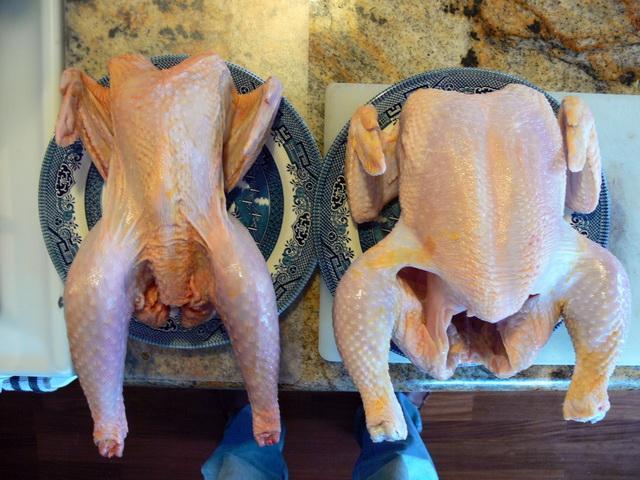Cuckoo, did you include the 20 birds lost to predation in your calculations for feed cost? Even when free-ranging is factored in, it's hard for me to understand how the cost per pound of meat could be lower for DP birds, unless you really have some excellent foraging grounds. Our DP birds forage as well, but they still have to eat a lot of chicken feed. (Our CX actually did forage a little, especially when they were younger, because they were raised by broody hens. It was hilarious to watch, like parents trying to get their kids to put down the video game, get off the couch and go play in the street!)
If it's really possible to get the cost of feed down to something comparable for either DP or CX, that makes the whole question even more complicated. Normally the one thing you can really count on is that the CX are going to produce the most meat per $. It is true that you can't supplement their feed much with table scraps or garden vegetables - they just don't like to eat those. My DP flock goes absolutely nuts for kale, but the CX were indifferent to it.
Otherwise it sounds as if your experience is pretty similar to mine. We both intend to continue raising both kinds of birds (though to be honest, I'm thinking the next batch of meaties might be FRs, just to see if the extra month gives them better flavor). And we find that growing our own meat and vegetables has caused us to eat more vegetables and less meat; and we have discovered that we actually enjoy the meat more in smaller portions. Our typical meal now includes about 4 to 6 oz of meat per person, it is the flavor we savor and not the bulk. I think our eating habits are shifting to follow the proportionate effort it takes to put the food on the plate, if you follow me - we'll eat cabbage and kale by the pound, meat by the ounce.
P.S. We'll use the chicken-apple sausage recipe from Bruce Aidells' Complete Sausage Book. I'll try to remember to post it here when apple season arrives and we actually make some.
P.P.S. "If I were a wealthy man..." Well, actually, I am feeling pretty wealthy, with about a half-ton of potatoes in the ground, a yard full of chickens producing 16 eggs a day, and a freezer full of meat. So all day long I "Biddy-biddy-bum".













